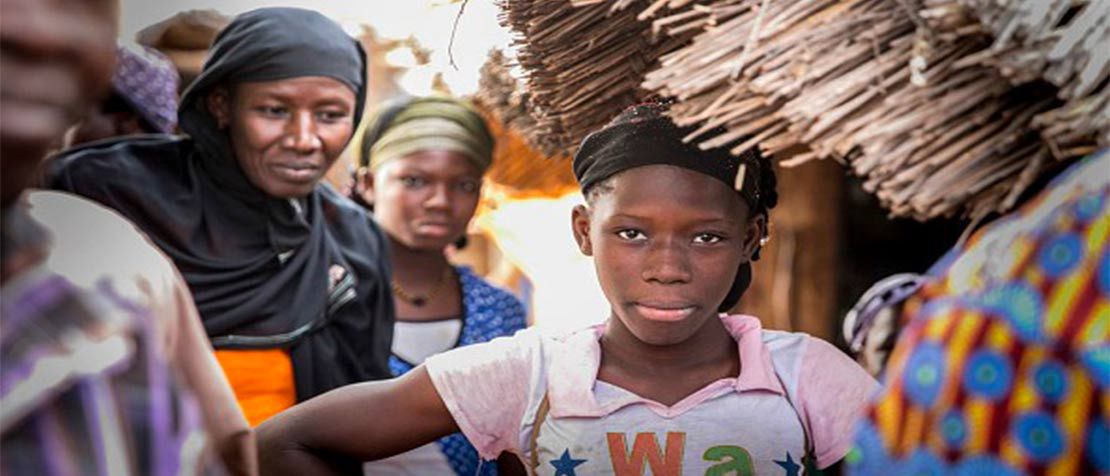
A radio message saved a girl’s life in Africa. Increased connectivity can save more.
Increased connectivity and information and communication technologies (ICTs) are helping improve lives around the world by bringing essential news and services to previously underserved populations. ITU plays a unique and critical role in enabling interference-free radio through globally harmonized standards. ITU News spoke with Roy Head, CEO of Development Media International, about how mass media messaging can support public health efforts.
How can mass media messaging support global health efforts and improve people’s lives?
Any health system needs doctors, nurses, and medicines. That’s the core of it. But no health system can save lives if people don’t come for treatment, or people aren’t even aware that treatment is available.
There’s a demand and a supply side to public health, and mass media is a great way of boosting demand.
We recently conducted a randomised controlled trial (RCT) in Burkina Faso, which represents the first scientific trial to show mass media can change behaviours. The trial, evaluated by the London School of Hygiene and Tropical Medicine, measured the effects of a three-year radio campaign on treatment-seeking for three of the biggest killers of children under 5: malaria, pneumonia and diarrhea.
“Mass media is a fantastic tool for empowering people with knowledge to improve their own health.” – Roy Head
The evaluation measured the number of parents taking their children to health facilities and diagnosed by health workers. Year 1 saw the following increases in intervention zones compared to controls:
- 56% increase in malaria consultations (p<0.001)
- 39% increase in pneumonia consultations (p<0.001)
- 73% increase in diarrhoea consultations (p<0.001)
Modelling using the Lives Saved Tool (LiST) showed that these behaviour changes corresponded to a mortality reduction of 9.7%. Approximately 3000 children’s lives were saved over the course of the campaign and an economic analysis showed that it was one of the most cost-effective ways of saving children’s lives.
As well as encouraging treatment-seeking, we use mass media to influence a range of other behaviour areas, such as family planning and nutrition. Mass media is a fantastic tool for empowering people with knowledge to improve their own health.
Could you please offer an example?
One of the children whose life was saved by the Burkina Faso campaign is called Mariéta. She fell seriously ill when she was one year old.
Girls in ICT Day: Transforming the lives of women and girls – through ICTs
It was only when [her father] heard a radio message explaining to parents how to recognise the symptoms of malaria and encouraging them to seek treatment, that [he] realised his daughter had severe malaria. He immediately sought medical help, as advised by the campaign.
“Mariéta made a full recovery and is now fondly known in her village as ‘child of the radio’.” — Roy Head
What technologies are key to these efforts and how can they be used most effectively?
The technology we use is guided by our “Saturation+” methodology, which is based on reaching as many people as possible, as frequently as possible. In most countries in Africa this involves using radio, as it remains the most widely accessed form of mass media.
However, we also use technologies, such as television and mobile videos, and often use multiple formats to boost saturation levels.
READ MORE: The power of radio to improve livesWe also carry out detailed analyses: we identify the best language mixes and media stations to use, and conduct formative research to ensure messages are tailored to the local context. It’s a pretty comprehensive process.
How might these lessons be applied in global health efforts moving forward?
Until now, mass media has been on the periphery of public health, but our results suggest that it should be closer to the core. At heart, this is all about improving human knowledge.
We’ve always known that mass media is one of the best ways of reaching millions of people at a time. We now know it works. For the first time, we have definitive evidence that mass media campaigns can be highly impactful and cost-effective when it comes to saving children’s lives.
Featured Photo by Ute Grabowsky/Photothek via Getty Images
Views expressed in this article do not necessarily reflect those of ITU.
